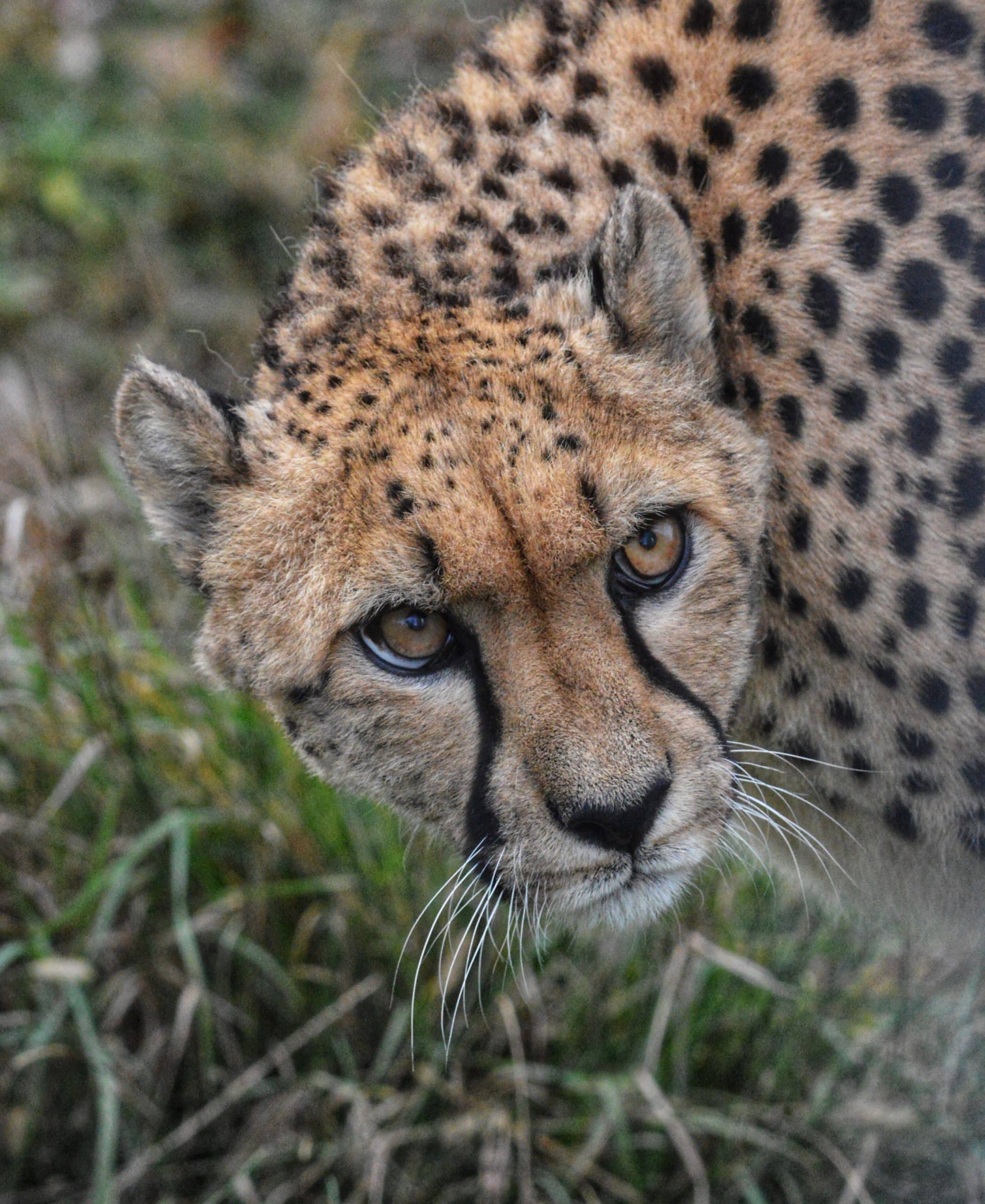The cheetah can be easily distinguished from other big spotted cats by its lithe, slender body, small head and extremely long legs. The whole body structure is adapted for sprint hunting. The cheetah is the only feline that cannot retract its claws, but they help it to run. It has a flexible spine that serves as a spring when running, thanks to which it can jump up to 7 meters in the distance when running. The large nostrils, lungs and heart ensure a sufficient supply of oxygenated blood to the muscles. The tail acts as a rudder when running. The black colouration on the face reflects light away from the eyes.
The black patches on the coat are of various sizes, reaching up to the diameter of a two-euro coin, and provide excellent camouflage for the cheetah.
Male and female cheetahs lead completely different lifestyles. The female cares for each litter of young for a full twenty months. Outside this period, she lives a solitary life. She will back down rather than fight in mutual skirmishes. Females do not aggressively defend their territory either, so females’ territories often overlap.
Males usually associate in groups of about four animals. The group is sometimes made up of brothers from the same litter who stayed together after they left the mother. They hunt together. They mark their territory and fiercely protect it from other male groups.
Females use scent markings to signal readiness to mate. As soon as one of the males discovers the scent of an oestrous female, he begins to communicate vocally with her. After mating several times, the male leaves the female.
The young are helpless for the first eleven days of their lives. As soon as their eyes open, the mother often carries them and changes shelter. They are weaned at the age of three months. The mother teaches them, shares the food with them. After 13 to 20 months, the young eventually leave the mother. They usually stay together for a few more months. Females leave the group first to find their own hunting territory. Males leave their birthplace together and do not become sexually mature until they are two to three years old.
Only 7,100 individuals live in the wild today and of these, the largest cheetah population lives in Namibia, 2,000 – 3,000 individuals.
Originally, the cheetah’s range included Africa, the Arabian Peninsula, the Middle East, and India.
Cheetahs are among the fastest mammals in the world. In short distance running, it reaches a speed of 110km/h. Such a fast run is very exhausting for the cheetah, and it quickly gets heated up. After about 400 metres, it has to take a rest.
The royal cheetah – the joined spots on its body form stripes – has long been considered a mystical animal, or an unknown species – it was spotted and photographed in 1975 in South Africa’s Kruger Park.
Man has trained cheetahs to hunt gazelles since 3,000 BC.
It has up to 60% hunting success rate (lion has max. 30%). But it does not always enjoy the spoils. It gets very overheated when running and after hunting, its body has to calm down – it cannot start eating right away. It is therefore often chased away from its prey by a larger predator (e.g., a lion with its 150kg).















